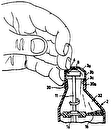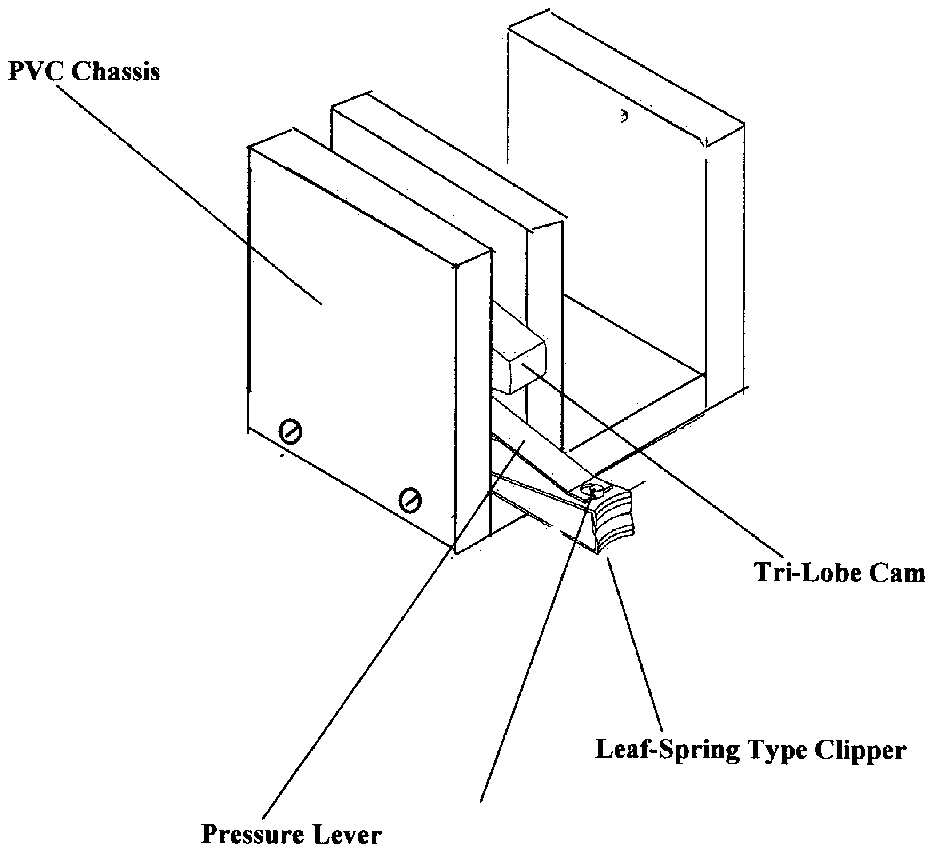
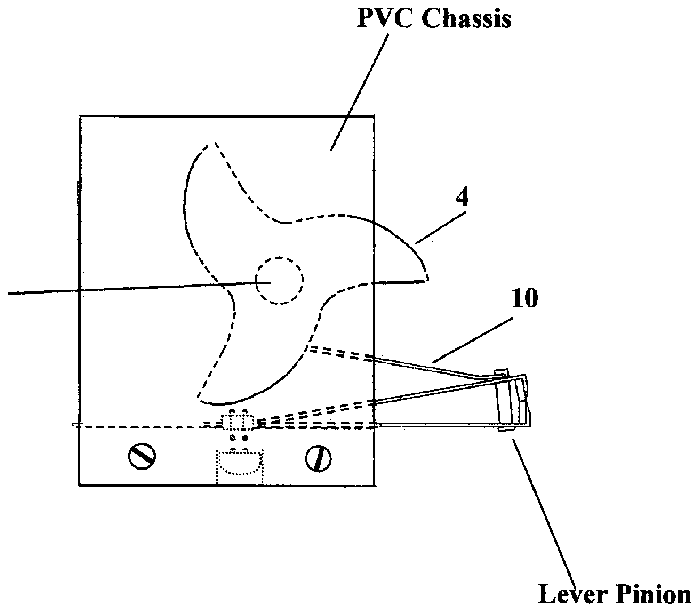
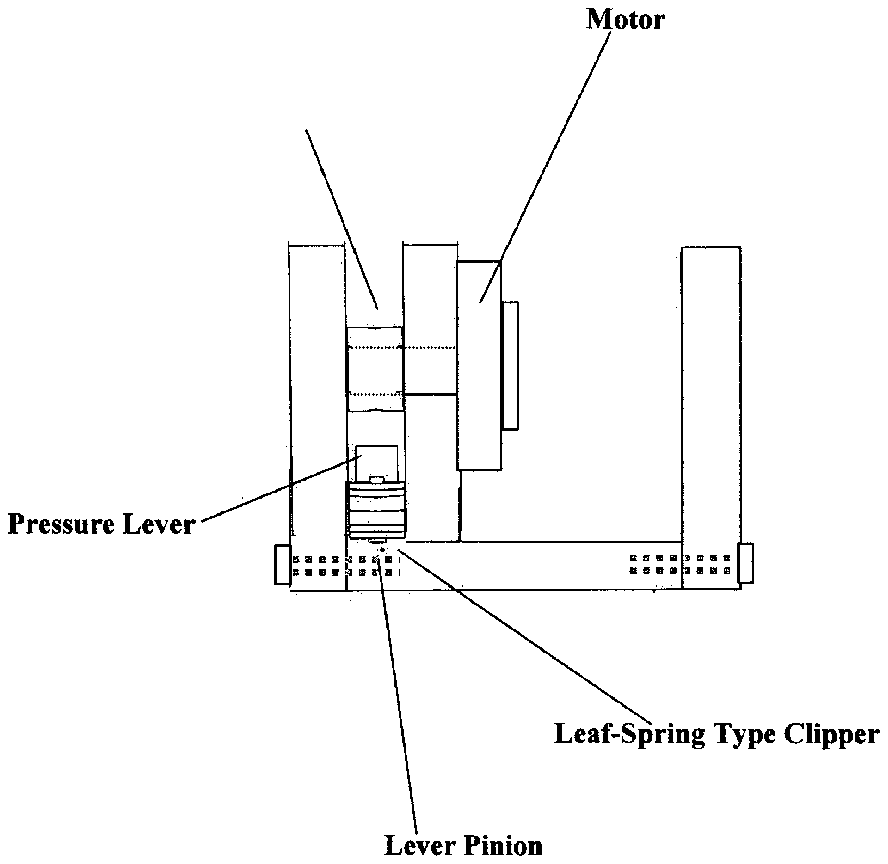
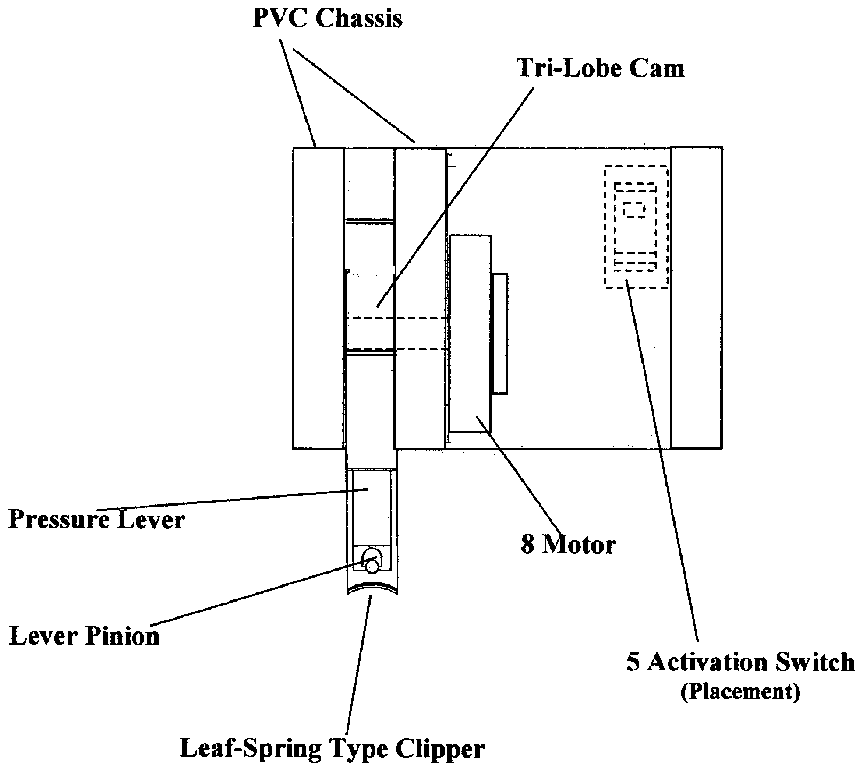
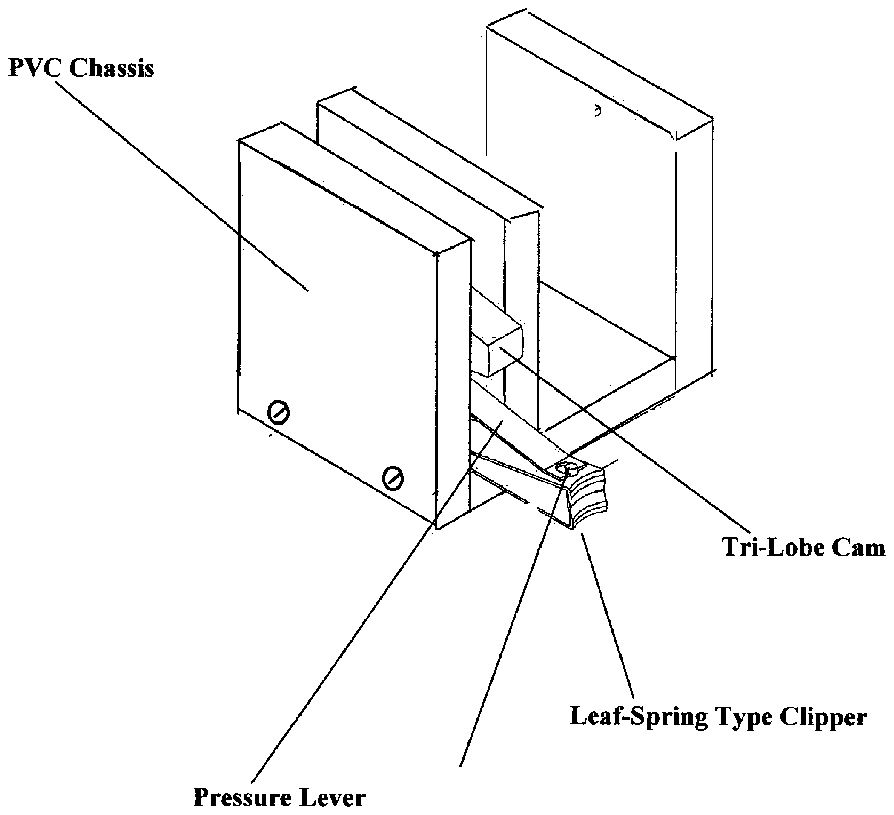
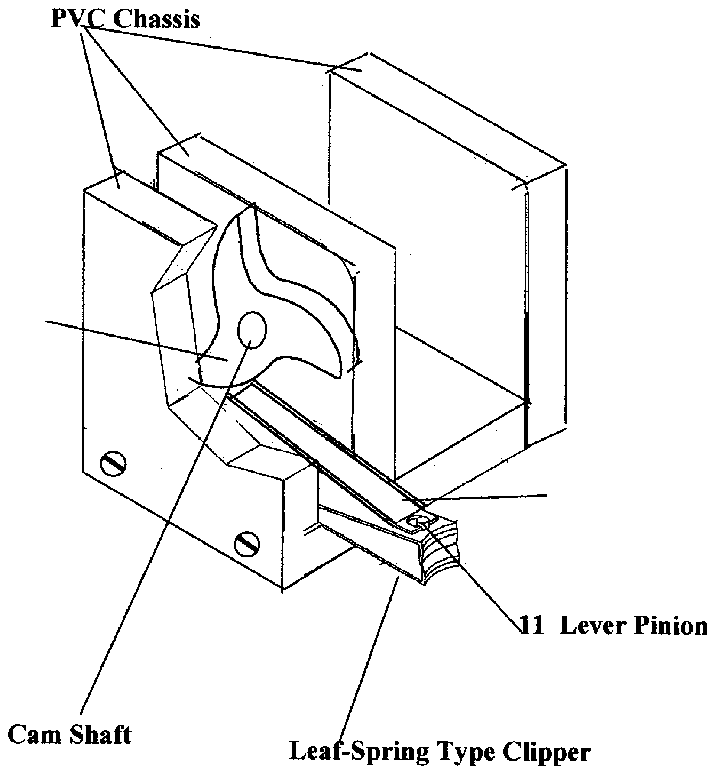
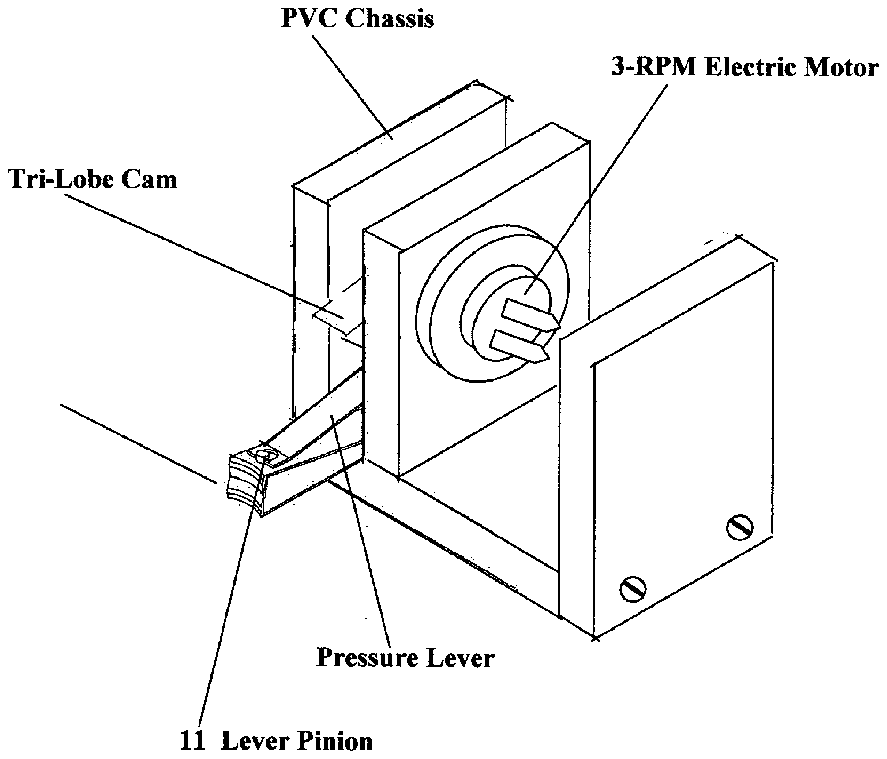
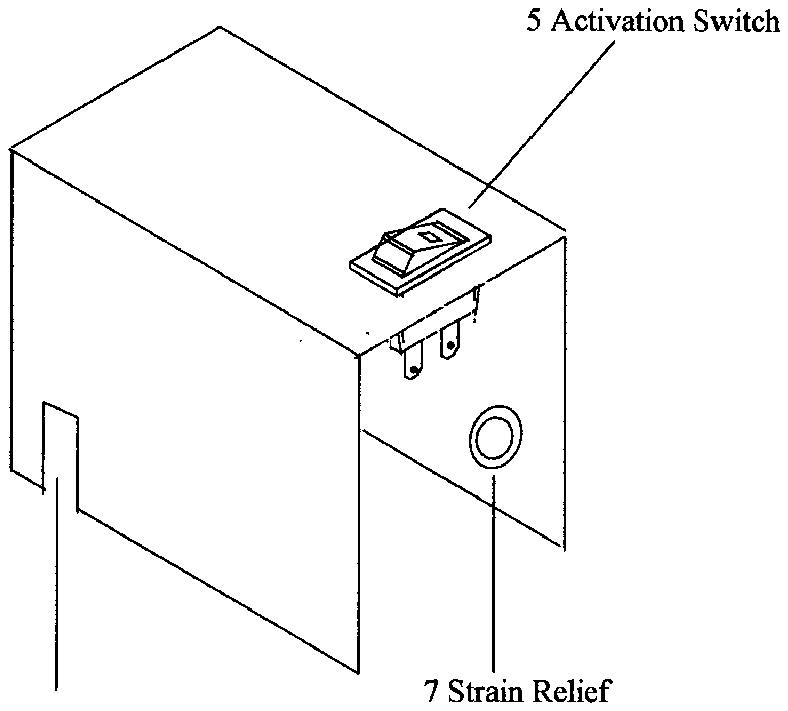
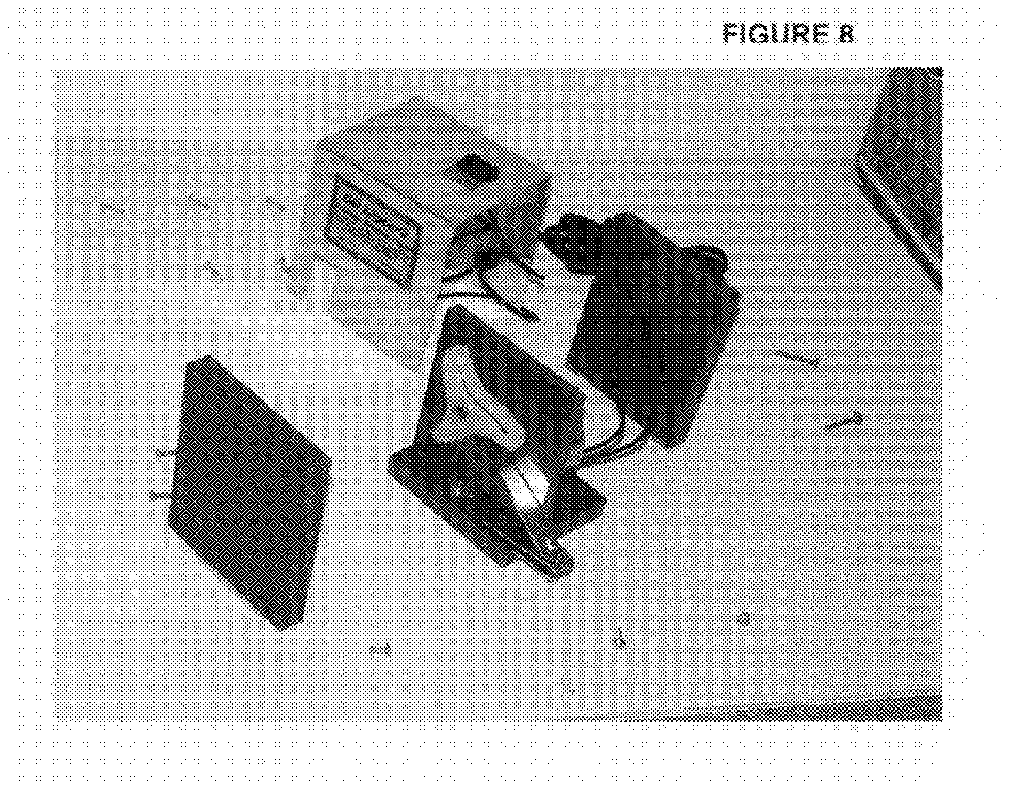
- 1chassis
- 2leaf-spring type clipper
- 4tri-lobed cam
- 5activation switch
- 7f 6 unit cover
- 10pressure lever
- 11lever pinion
Abstract
The submission is an electrically powered, self-operated, hands-free, fingernail clipper for persons having neither the strength nor the flexibility to use a conventional leaf-spring type nail clipper. The unit is mounted in a PVC housing, with an aluminum cover, and consists of an electric, 3 RPM Hi-Torque motor, mounted on the side of a chassis strut, with a direct shaft drive to a Tri-Lobe cam that depresses the activating lever of a pair of conventional, leaf-spring type nail clippers. The motor is activated by a rocker switch, applying power through a cable plugged into normal house current (115-120V).
Description
BACKGROUND OF THE INVENTION
[0001] 1. Field of the Invention
[0002] The present invention relates to fingernail clippers, and more specifically to a new and improved self-operating, hands-free fingernail clipper especially adapted for individuals who, through lack of strength in one or both hands or because of any deformity, find using conventional clippers too difficult or impossible.
[0003] 2. Description of the Prior Art
[0004] Various types of nail clippers are known in the prior art. A typical example of such an item is found in:
U.S. Pat. No. 7,222,427 to Kaidi et al. This patent teaches a conventional leaf-spring type clipper having a sleeve attached to catch clippings. U.S. Pat. No. 7,194,807 issuing to Weiss is a variation of the former with a different apparatus to catch the clippings. U.S. Pat. No. 7,159,318 to Farag discloses a clipper unit having a shield with various configurations of shapes cut into it for the purpose of sticking the user's nail through to be sheared off. U.S. Pat. No. 6,865,812 issuing to Martin Jr. primarily teaches a toenail clipper due to the presence of an extended handle. U.S. Pat. No. 6,438,845 to Jung teaches a scissor-type nail clipper. U.S. Pat. No. 4,819,673 to McMullen teaches a clipper somewhat similar in concept to a conventional leaf-spring type clipper wherein the cutters are positioned on the side rather than on the leading edge. Lastly, U.S. Pat. No. 3,986,257 to Kiura discloses another nail clipper similar to a conventional leaf-spring type clipper but having a chamber to collect the clippings.
[0012] While all the above-mentioned devices may be suitable for their intended usage, none is specifically designed for persons who have some degree of difficulty in squeezing the clipper's levers due to inherent deformity or strength problems, nor are these devices particularly adapted for persons who suffer from certain bone and/or joint diseases whose strength and/or flexibility negates the use of conventional means to cut their nails.
SUMMARY OF THE INVENTION
[0013] The present invention addresses the deficiencies of prior art nail clippers as relate specifically to usage by persons having digital strength problems or joint/bone disease that result in lack of strength and/or deformity. The present invention is a new and greatly improved hands-free nail clipper which can be used by the group of individuals described above as well as by persons who have no problem using the currently available, conventional-type nail clippers. The nail-clipper of this invention makes use of an electric motor-driven, Tri-lobed cam to power a conventional leaf-spring type clipper. When the unit of this invention is placed on a surface and turned on, the user can easily place his/her nail in the clipper and allow the motorized cam to depress the clipper handle to operate the clipper; or, in the case of individuals with some degree of deformity, such as caused by arthritis or other bone diseases, such individuals will be able to guide each fingernail into the clipper with the other functional hand. Because this motor runs continuously once the activation switch is activated, the user needs only to sit in front of the unit and guide his/her nails into the cutting edges.
[0014] Therefore it is an object of the present invention to provide a new and improved self-operating, hands-free fingernail clipper for use by persons who may be unable to squeeze a conventional nail clipper or who may be unable to physically align their fingernails with a conventional clipper while simultaneously try to manage a conventional clipper with the other hand.
[0015] It is another object of the present invention to provide a new and improved self-operating, hands-free fingernail clipper.
[0016] It is a further object of the present invention to introduce a self-operating fingernail clipper which is of durable and reliable construction.
[0017] It is a still further object of the present invention to provide self-operating clipper which is of simple construction, providing low cost of manufacture and assembly, and which can be easily and efficiently manufactured and marketed.
[0018] For a better understanding of the present invention, reference should be made to the accompanying drawings and description of the Preferred Embodiment.
BRIEF DESCRIPTION OF THE DRAWINGS
[0019] FIG. 1 illustrates a left-side view of the nail clipper of this invention .
[0020] FIG. 2 illustrates a front elevational view of the device of this invention.
[0021] FIG. 3 illustrates a top plan view of the device of this invention.
[0022] FIG. 4 illustrates a left-side perspective view of the device of this invention.
[0023] FIG. 5 illustrates a left-side perspective view of the device of this invention with a portion cutaway, exposing the Tri-lobed cam.
[0024] FIG. 6 illustrates a right-side perspective view with a portion cutaway, exposing the drive mount.
[0025] FIG. 7 illustrates a right-side perspective view of the cover that encloses the mechanism and wiring connections of the embodiment.
DESCRIPTION OF THE PREFERRED EMBODIMENT(S)
[0026] FIG. 1 illustrates a left-side view of the nail clipper of this invention, showing the relative position of the Leaf-Spring type clipper 2 , and illustrating that said clipper extends far enough away from PVC Chassis 1 , and that there is ample room for the user to approach the cutting edges regardless of degree of angle necessitated by any deformity of the user. As seen in FIG. 1 , the Pressure Lever 10 , is under, and will be depressed by the Tri-Lobed Cam 4 as it rotates.
[0027] FIG. 2 illustrates a front elevational view of the device of this invention, showing the relative simplicity of the unit. Chassis 1 is produced using four separate pieces of PVC secured together with screws. Tri-Lobed Cam 4pan> operates leaf-spring type clipper 2 mechanism. This operation is performed by Tri-Lobed Cam 4 which places enough force on Pressure Lever 10 which is held to leaf-spring type clipper by Lever Pinion 11 . Also in the base plate of the Chassis 1 is a shallow channel for the leaf-spring type clipper to rest in for alignment with the Tri-Lobed Cam 4 . The clipper is solidly attached to the base plate with a nut/bolt.
[0028] FIG. 3 illustrates a top plan view of the device of this invention, showing the relative location of activation switch 5 which is mounted on the top surface of the Unit Cover 6 as well as showing the clearance on either side of the clipper's cutting edges for purposes of allowing for any physical problem with aligning the user's nail to the clipper's cutting edges.
[0029] FIG. 4 illustrates a left-side perspective view of the device, showing some visual parts and Chassis 1 construction of the present invention.
[0030] FIG. 5 illustrates a left-side perspective view of the device of this invention with a portion cutaway, exposing the Tri-Lobed Cam 4 . FIG. 5 provides a glimpse of the actual operating system of the device, namely, Tri-Lobed Cam 4 and its orientation to the active leaf-spring clipper 2 relative to pressure lever 10 and lever pinion 11 .
[0031] FIG. 6 illustrates a right-side perspective view with a portion cutaway exposing the drive mount and Motor 8 location.
[0032] FIG. 7 illustrates a right-side perspective view of the device Cover 3 showing the Activating Switch 5 in place, as well as the strain relief plug for the power cord.
[0033] In operation, the device of this invention is a self-operated, hands-free fingernail clipper having a PVC chassis 1 , an upright strut upon which an electric high-torque 3 RPM drive assembly 8 is mounted, with a direct drive camshaft, pressure fitted to a Tri-lobed cam 4 . When the device is seated upon a table or countertop, activation switch 5 is pressed to activate the unit. Optimally the high-torque motor revolves at 3 RPM, thereby causing the Tri-Lobed Cam 4 to come in contact with the activating lever 10 of a pair of leaf-spring type nail clippers at a rate of approximately 9 times per minute. As a result of actual trials, this speed of operation has been determined to be the most advantageous speed for operation of the nail clipper of this invention.
[0034] It should be noted that power to the drive motor can be obtained from any normal household 120V electrical outlet, through a power cord not shown in the drawings. In other iterations, the basic chassis of this invention with the same leaf-spring type clipper as described above, can also operated by being powered with a solenoid, with foot switch, or alternately with a cable/foot pedal.
[0035] Although the present invention has been described with reference to particular embodiments, it will be apparent to those skilled in the art that variations and modifications can be substituted therefore without departing from the principles and spirit of this invention.
DRAWING LEGEND
[0000]
1 PVC Chassis
2 Leaf-Spring Type Clipper
3 Cutout to Accommodate Clipper
4 Tri-Lobe Cam
5 Activation Switch (On/Off)
6span> Unit Cover
7 Strain Relief
8 Motor
9pan> Drive Shaft
10 Pressure Lever
11 Pressure Lever Pinion

